Introduction
There has been an explosion in POS malware in the last year. At Morphick, Nick Hoffman and I found 2 undiscovered families in 2014 and we just found our first new family of 2015. This new malware which we’re calling LogPOS has several notable differences from recent POS malware.
The hash that we’ll be pulling apart in this post is af13e7583ed1b27c4ae219e344a37e2b.
Diving In
Almost immediately when looking at this sample, a string jumped out - \\.\mailslot\LogCC.
In most POS variants, one process scrapes memory from other processes and writes discovered track data to a log. Because LogPOS injects code into various processes and has each of them search their own memory, it can’t use a log, since they can’t all open the same file with write access at once. Instead, it uses mailslots.
Using mailslots for communication/storage isn’t a new mechanism for malware, in FireEye’s report on APT28 there is mention of the group using a mailslot with a name of check_mes_v5555. Mailslots are an IPC mechanism allowing multiple clients to send messages to a server. In this case, the main executable creates the mailslot and acts as the mailslot server, while the code injected into the various processes acts as a client, writing carved credit card numbers to the mailslot for direct transmission to the C2.
Early in the execution of the program, there is a call to CreateMailslotA with an mailslot name of \\.\mailslot\LogCC.

If the mailslot fails to be created, the program will exit. If the mailslot succeeds the program will enter an infinite loop performing the following functions.
Sleeping 500 milliseconds
Iterating over processes
Comparing against a whitelist
Inject shellcode into the process (if not in whitelist)
Scanning for credit card track information
Validation using Luhn's
Reading from the mailslot
POST'ing out the data
The most interesting thing is the injected code, so we’ll look at that in more detail below.
While iterating over the processes (as mentioned above) the malware will check the process name against a whitelist containing the following names.
- windbg.exe
- logounui.exe
- taskmgr.exe
- skype.exe
- thunderbird.exe
- devenv.exe
- steam.exe
- winlogon.exe
- wininit.exe
- csrss.exe
- smss.exe
- svchost.exe
- firefox.exe
- chrome.exe
- explorer.exe
- psi.exe
- pidgin.exe
- System
The code to compare the strings can be seen below:
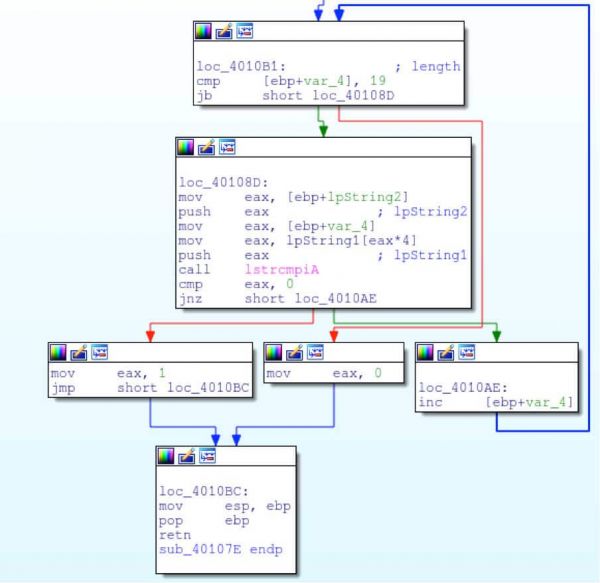
Once a program that is not in the whitelist is found, code is injected into it’s memory space using WriteProcessMemory. The first thing that this shellcode does is crawl to find the base of kernel32, this is used to start building imports. The method for finding kernel32 is a well documented one that has been discussed in many research blogs.
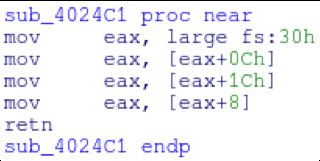
Once the base is found, the shellcode will begin to rebuild it’s imports via it’s own hashing technique. A list of some of the hashes and their values are:
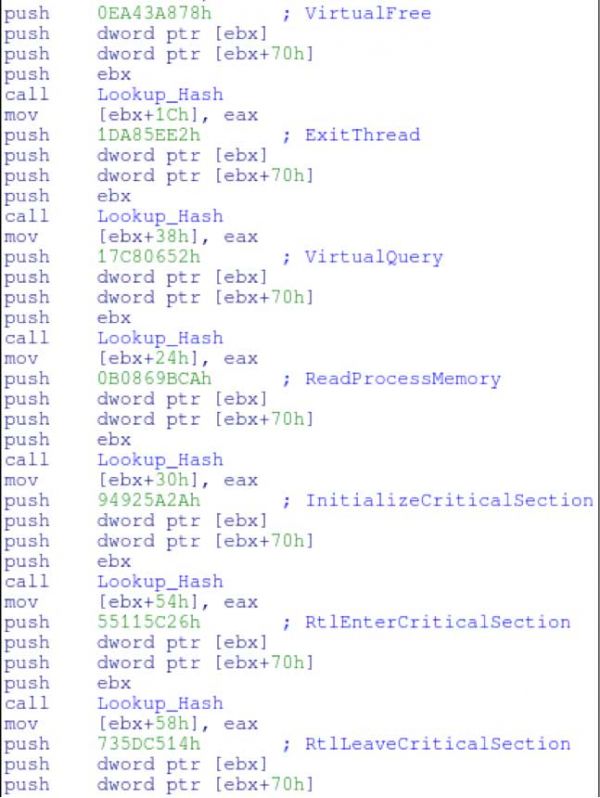
After building the imports, the malware will call CreateFileA with a filename of \.\mailslot\LogCC to obtain a handle for writing.

When scanning memory, the malware will use a custom search to find common sentinels for track information.
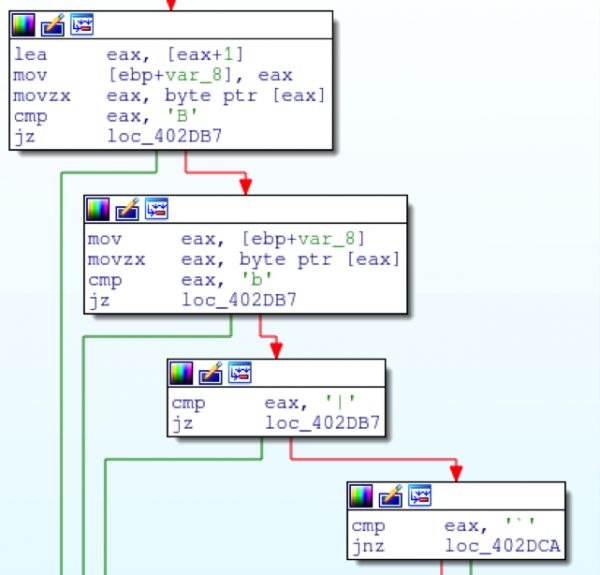
Information is passed to an implementation of Luhn’s algorithm for validation. Once hits are located, they are sent to the mailslot where the main program will read them. When a number is added (on a schedule) the malware will build a format string and post the information to a remote site. (Note, the site has been redacted, due to live numbers currently being posted there)

The data is then sent to a remote site (via HTTP GET)

The results are populated in a table (at the time of this writing the form is not password protected and the results can be seen). A majority of the hits are in the process space of rdpclip and notepad leading us to believe that the author is currently testing their code. A screenshot of the panel with IP’s can be seen below:
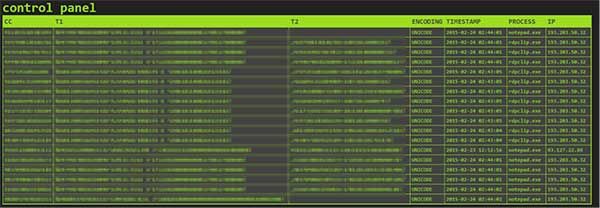
Detection
LogPOS avoids a traditional detection mechanism of scanning files for unencrypted credit card information by instead writing to a mailslot. However, using a tool like yara, it is easy to detect variants of this malware. The following rule will assist in finding this malicious tool on your network.
rule LogPOS
{
meta:
author = "Morphick Security"
description = "Detects Versions of LogPOS"
md5 = "af13e7583ed1b27c4ae219e344a37e2b"
strings:
$mailslot = "\\\\.\\mailslot\\LogCC"
$get = "GET /%s?encoding=%c&t=%c&cc=%I64d&process="
//64A130000000 mov eax, dword ptr fs:[0x30]
//8B400C mov eax, dword ptr [eax + 0xc]
//8B401C mov eax, dword ptr [eax + 0x1c]
//8B4008 mov eax, dword ptr [eax + 8]
$sc = {64 A1 30 00 00 00 8B 40 0C 8B 40 1C 8B 40 08 }
condition:
$sc and 1 of ($mailslot,$get)
}
In addition to yara, this POS malware can be detected with its URI pattern. The following bro signature will detect this malware from a network perspective.
signature LogPOS {
#source: Morphick Security
#version: 1
#Ref: af13e7583ed1b27c4ae219e344a37e2b
ip-proto == tcp
dst-port == 80,443
http-request /.*encoding\=.*\&t\=.*\&cc\=.*\&process\=.*\&track\=/
event "LogPOS Credit Card GET Request Pattern"
}
Conclusion
POS malware has been getting attention on a lot of fronts. TrendMicro recently reported that there have been more new POS variants discovered in the last 6 months than the last several years.
For example, earlier this year Josh Grunzweig uncovered a new variant of Alina (dubbed Eagle), and Trustwave documented another new version (dubbed Spark). While all this was going on, new families like Getmypass, LusyPOS, Daredevil, NewPOSThings, and Backoff were just starting to be discovered.
Despite the ongoing efforts to curb POS malware from being successful, this seems to be an area where there is no slowing down.